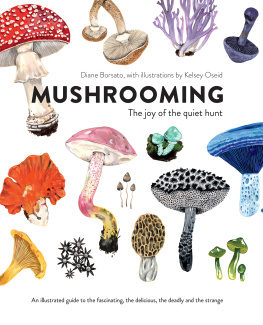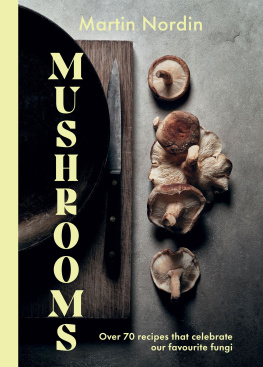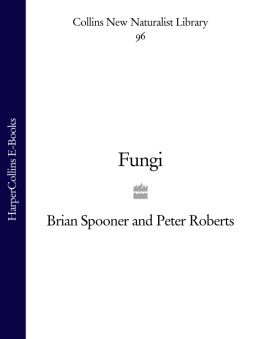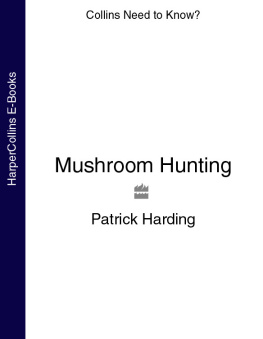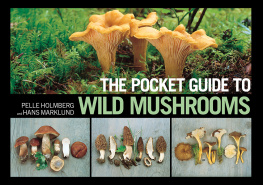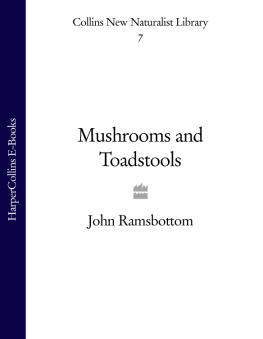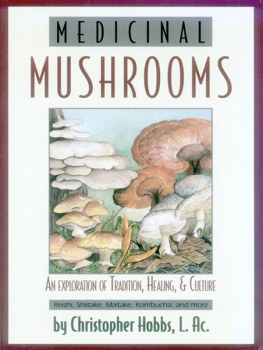
Pholiota multifolia.

Tricholomopsis rutilans.
MUSHROOMS
of the NORTHEASTERN
UNITED STATES and
EASTERN CANADA
Timothy J. Baroni
TIMBER PRESS FIELD GUIDE
This book is dedicated to the following individuals in appreciation of their skills as educators: Howard E. Bigelow and Margaret Elizabeth Barr Bigelow, both now deceased and both formerly professors of mycology and botany at the University of Massachusetts at Amherst, and David Lee Largent, emeritus professor of mycology and biology at Humboldt State University, Arcata, California. During my studies under their guidance, they provided training and inspiration and nurtured in me a lifelong fascination with fungal organisms.

Laetiporus sulphureus.
CONTENTS
ACKNOWLEDGMENTS
This book would not have been possible without the donation of a large number of images by Rene Lebeuf. Her generosity in providing images, her enthusiasm for the project, and the many discussions of species concepts for some difficult groups were indispensable. Roy E. Halling also provided images and much needed clarification on the changes in bolete nomenclature.
Roy and I spent many years together exploring for fungi. Ernst Both and I also spent many hours in the field. These two field companions made an enjoyable endeavor even more interesting. I am pleased to be able to provide some of their knowledge to others.
Additionally, many others provided images or discussions on current research including Ron Petersen, Clark Ovrebo, Rick Kerrigan, Andy Methven, D. Jean Lodge, Michael Kuo, Scott Redhead, Michael Goldman, Lance Lacey, Amanda Neville, Joseph Nuzzolese, Jack Ruggirello, and Nina Burghardt. Gerald Jerry Sheine is due very special thanks for digitizing all of Howard Bigelows and my Kodachrome slides.
A significant amount of mushroom biodiversity exploration in the Northeast, that produced collections and images for this work, was made possible by personal funds and also by grants from SUNY Cortland Faculty Research Program, New York State Albany Museum, and Buffalo Museum of Science. Facilities for field work in the Adirondacks were provided by the SUNY Cortland Outdoor Education Center at Raquette Lake; by the SUNY College of Environmental Science and Forestry, Adirondack Ecological Center facility at Huntington Forest in Newcomb, New York; and by Bonnie View Cottages in Wilmington, New York.
I also wish to thank the Department of Biological Sciences, SUNY Cortland, especially Steven Broyles, chair, for complete support during the writing and assembling of this book, and the college for providing office space, herbarium facilities, the logistical support and microscopic equipment.
Most importantly I want to thank my friend and partner, Robin Marie Wheeler Baroni, for being patient, supportive, and helpful when I needed someone to give a different perspective in solving problems or getting around mental blocks that kept me from progressing forward smoothly. Her support was essential and is constantly priceless.

INTRODUCTION
Let me say this right up frontthere are no old, bold mushroom foragers, only old wise, well-trained mushroom foragers. Good doses of caution and common sense are important to remember if you wish to use wild fungi and plants for food. Become an expert first, and then carefully use your knowledge. I have high hopes this field guide and others you may collect over the years, will help you enjoy the beauty and, with great care and caution, the flavors of the wild fungi that can be found in our fields and forests.
But honestly, most fungi covered in this and other field guides are not really edible. The real purpose of a field guide like this one is to help the curious learn more about the species of fleshy fungi in a particular area.
At best guess, several thousand species of mushrooms and other fleshy fungi occur in northeastern North America. Most field guides rarely cover more than 400500 species. Of course, a good field guide should cover the bulk of the more commonly collected species, and that is the case here. In addition, I present at least a hundred species that are not to be found in any other existing field guide covering North American mushrooms.
Realize, however, that even if you have several good field guides covering a broad range of species, you will still find species not covered. That is one of the exciting things about studying fungiyou might just discover a species from your area that is a new report for the region. You can share that information via several avenues, but a convenient one is MushroomObserver.org . You are allowed to post information on your finds at this site after joining the group.
You will need to learn some photography skills, since this is a site for posting images of your finds as well as information on the features of a species and its ecology. Please take spore prints and provide that information also.
So with all that in mind, bon voyage. Take this field guide and begin the journey. If you began your studies some years ago now, I hope this newest addition will help you continue your journey of learning about the wild mushrooms around us.
Geographical Scope of This Guide
The area covered in this guide is roughly that of the eastern hardwood forests of North America. These territories include New Brunswick, Newfoundland, most of Quebec and Ontario, extending south through Minnesota to Illinois and eastward through the states surrounding the Great Lakes regions to West Virginia, Pennsylvania, Maryland, and then up the coast to Maine. This area includes deciduous and coniferous forests, bogs, and alpine habitats that offer a wide range of species, many of which are only found in this region in North America.
Toxins in Fungi: To Eat or Not To Eat
Not all mushrooms are edible, not all mushrooms are poisonous, but if you wish to use macrofungi for food, you should become an expert at identifying the edible and the poisonous species. This approach will serve you well. If you decide to use wild mushrooms in your cuisine, as many people throughout Europe, Asia, Africa, and even North America have done for centuries, I strongly recommend, whether you are a beginner or have some experience, that you thoroughly learn targeted species and use only a small number of these edibles to start: tooth fungi (Hydnum repandum), puffballs (Lycoperdon), sulfur shelf polypore (Laetiporus), porcini (Boletus edulis), and morels (Morchella) are easily mastered. I recommend this approach because making a mistake can be very uncomfortable or even deadly.
You might ask, why bother learning about the poisonous species, I am only interested in the edible ones? First of all, it is important to know which ones not to consume, but also because you will see these beautiful poisonous species quite frequently on excursions into the forests in late summer and fall. Amanita bisporigera
Next page

